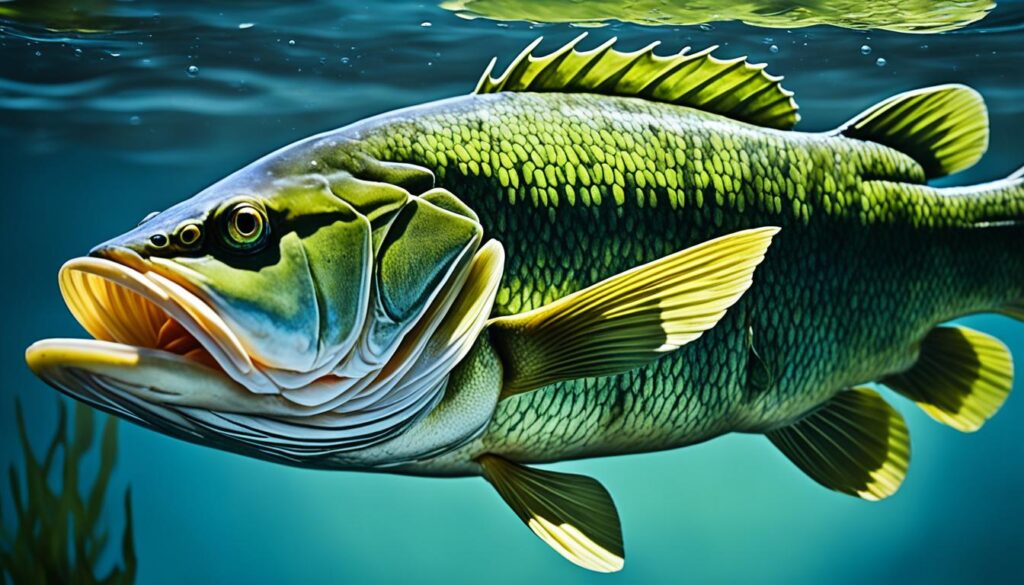The floating worm is a versatile and effective tool for bass fishing. Its adaptability, whether it’s fished near the surface or deeper, and the option to adjust weight according to the conditions, provide anglers with a range of strategies to effectively entice bass.
Fishing for bass near the shore after laying eggs can be challenging due to their skittish behavior. In such situations, the subtle presentation of a weightless floating worm can be a wise choice, especially in murky waters with plenty of cover for bass to hide.
The slow and erratic movement of the floating worm, such as the Zoom Trick Worm, combined with its bright colors, serves as an excellent attention-grabber for bass. This allure can prompt even non-hungry bass to strike, making it a valuable addition to any angler’s arsenal. It’s all about enticing those strikes, and the floating worm does a great job of that.
Mastering the Art of Rigging Floating Worms
Regarding rigging floating worms, anglers have many methods, each with benefits for reeling in those bass.
Weightless Texas Rig
Rigging a worm weightless is perfect for targeting big bass in shallower areas. This finesse technique allows the floating worm to move effortlessly in the water, appearing harmless to fish, particularly in clear conditions.
Carolina Rig
The Carolina rig adds a weight, bead, and swivel above the worm, creating a trail of stirred-up mud and silt as the worm moves. Bass are enticed as the floating worm swims through this enticing cloud.
Split Shot Rig
Like the Carolina rig, the split shot rig clamps the weight onto the line, preventing it from sliding. This setup lets the worm sink through the water smoothly, enticing strikes.
Texas Rig
The Texas rig features a bullet weight in front of the worm, offering versatility for various fishing situations. Anglers can choose to fix the weight in place or allow it to move freely, adapting to the conditions as needed.
Shaky Head
Shaky heads and wobble heads provide another option for enticing bass. These rigs create motion that attracts fish, which is especially effective when fishing on the bottom. They also provide direct feedback on your bait’s activity.
Wobble Head
Similar to shaky heads, wobble heads combine weedless fishing with enticing motion. They allow direct contact with the bottom while keeping the worm clean and attractive to fish.
Tokyo Rig
The Tokyo rig elevates the worm off the bottom using a short wire, keeping it away from the messy substrate. This setup can prolong the bait’s lifespan and increase its appeal to fish.
Drop Shot
The drop shot rig suspends the worm above the weight, which is ideal for vertical fishing. This precise setup is highly effective, particularly in clear water conditions, enticing strikes from curious bass below.
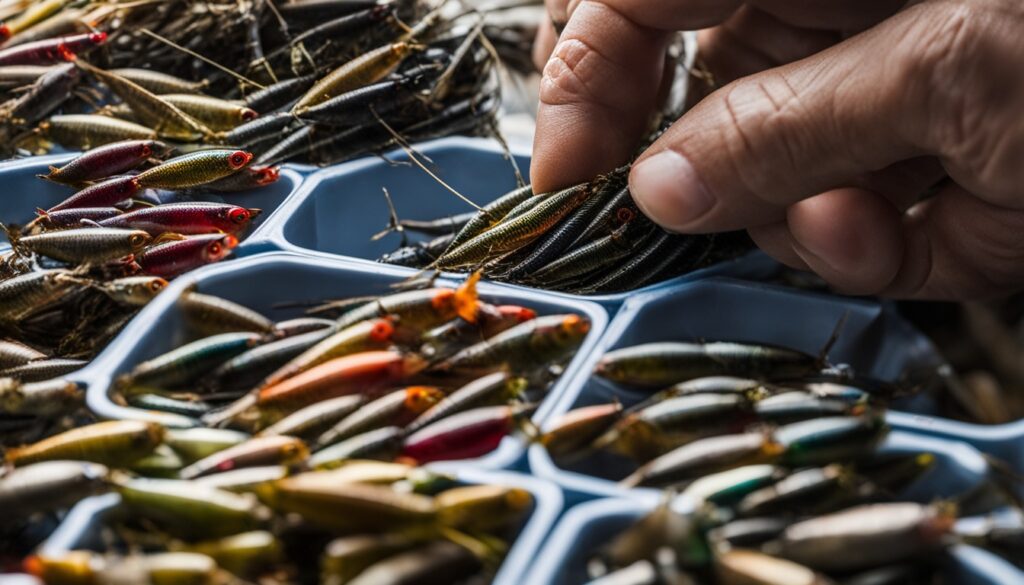
Wacky Rigging Techniques for Floating Worms
The wacky rig is excellent for fishing around docks with hanging cover. It uses a weightless system, moving the hook to the worm’s middle. This creates a slow, straight-down fall. It works well during the spawn when bass are picky.
For a change in depth or speed, try the wacky jighead. It’s easier to use with a baitcaster than other methods. The Neko rig is like the wacky rig but is pulled along the bottom. It combines the shaky head and wacky rig movements.
Adding weight to the wacky rig can also help. It lets you control how fast the worm sinks and at what depth. Proper weight balance is critical. This method helps to catch tricky bass under different conditions.
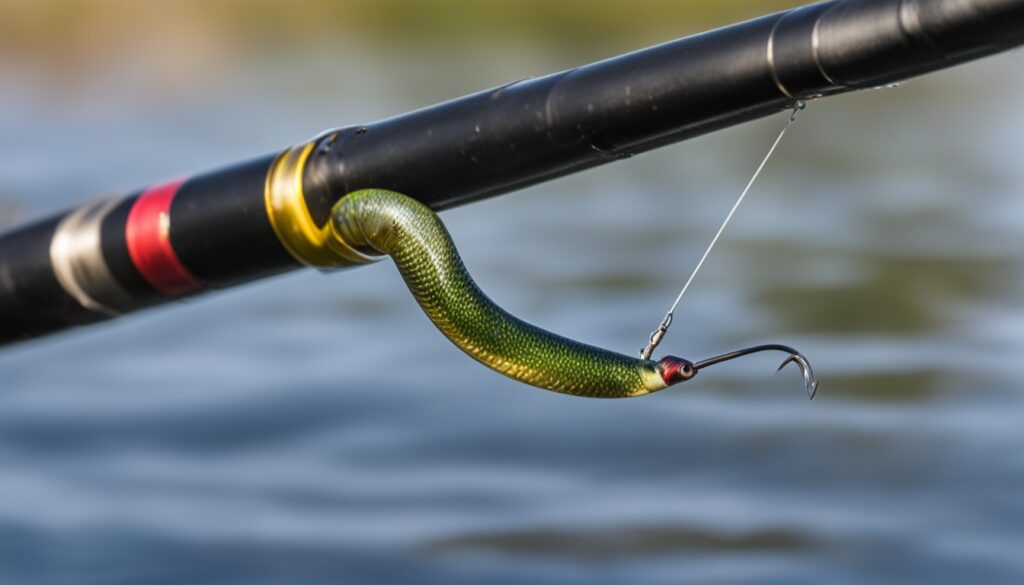
Floating Worms: How to Rig and Fish for Bass
The floating worm trick is a classic method that many modern fishers overlook. It’s perfect for catching bass in shallow spots when they’re laying eggs. These worms are very light and nearly impossible for weeds to grab onto, making them excellent for casting under docks, into bushes, and near plants in the water.
A trick with the floating worm is that it doesn’t always have to float on the surface. The key is to stay somewhere in the middle of the water or sink very slowly. This makes the bass curious and more likely to bite. By trying out different types of floating worms, you can figure out which ones work best.
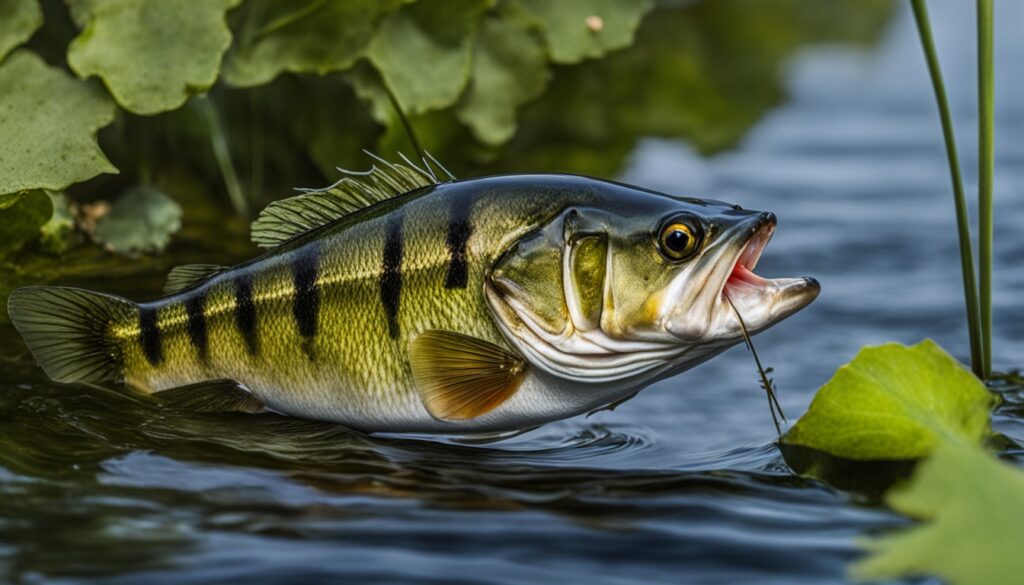
Selecting the Right Gear for Floating Worm Fishing
Choosing the right rod and reel for floating worms is crucial. A setup that makes casting or skipping easy is best. A medium- to medium-heavy spinning rod 7′ to 7’3″ long works best for 4—to 6-inch worms. A medium-heavy casting rod is a good fit for larger giant worms or heavier lines. It should be similar in length and power, which helps you match your gear to the size of your bait. Anglers pick spinning reels with a slower gear ratio for their floating worm setups. This means about 5.1:1 to 6.1:1. Or they go with mid-size casting reels.
These choices help keep the worm in place longer, increasing your bite chances. A braided line with a fluorocarbon leader is a smart move for the line. It’s sturdy and resistant to wear, so it’s excellent for fishing near thick vegetation or structures. It provides the toughness needed without scaring the fish off. The proper hook selection and rigging for floating worms are also crucial. A top pick is an offset wide-gap hook, Texas-rigged to be weedless. Adding swivels and leaders can also help. They prevent line twists, especially when the worm moves as you reel it in.
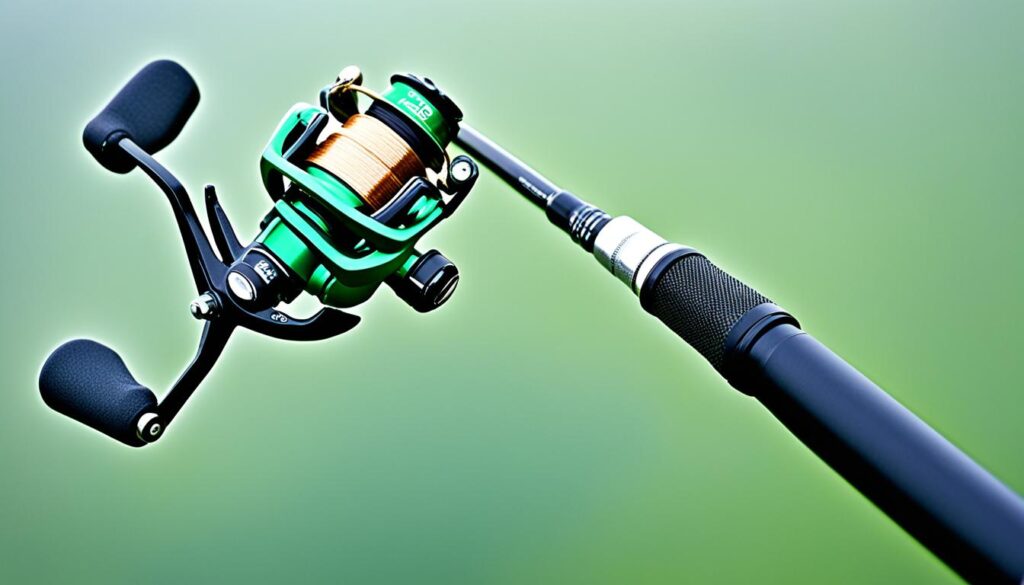
Presentation and Retrieval Techniques
Floating worm fishing works well in water under 10 feet deep. It is essential to fish where bass like to hide, such as weed beds, rocks, and under docks. It would be best to cast the worm past your spot and slowly bring it in. This makes the worm move like a snake just under the water.
The “walk the dog” method can help you cover a lot of water. Or, try twitching the worm slowly so it moves just under the surface. When it gets close to a good spot, let it sink slowly. Sometimes, adding a tiny weight to the worm’s tail can make it fall in a way that attracts bass. Using the right gear, like a long rod, makes casting where you need to be more accessible.
Using a robust and visible line when fishing with floating worms is essential. Bass might pick up the worm when it’s not moving. This can make setting the hook hard. You can catch bass in various places if you learn to fish with floating worms well. This includes when you need to be careful (finesse) or more strength.
FAQ
What is a floating worm, and how can it be rigged?
A floating worm is great for catching bass. It can be set up in many ways. You can use it without any weight or add weights and hooks to change how it looks and moves.
What are some common ways to rig a floating worm?
There are lots of ways to rig a floating worm. Some include the Texas rig, Carolina rig, split shot rig, and more. Each way changes how the worm acts in the water.
How do you fish a wacky rigged floating worm?
The wacky rig method is awesome for floating worms. It involves putting the hook in the worm’s middle. This makes the worm fall slowly. You can also try a weighted or Neko rig for a different fishing experience.
When is the best time to use a floating worm, and where should you target?
Use floating worms during the spring when bass are shallow. They are great near docks, brush, and tules where bass lay eggs. Its weedless setup can reach tricky spots.
What gear is best for fishing with floating worms?
For floating worm fishing, a 7 to 7.3-foot medium to medium-heavy rod works well. You can use a reel with a slow gear ratio. A braid mainline with a fluorocarbon leader is recommended. An offset wide-gap hook is often used for the Texas rig.
How should you present and retrieve a floating worm?
Start by casting slightly past your target. Then, let the worm glide into the water. A “walk the dog” retrieve or slight twitch can draw in strikes. Adding a small weight can create a unique fall motion.
